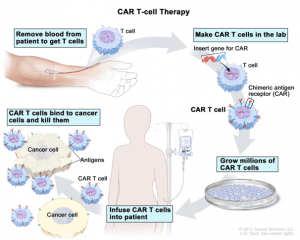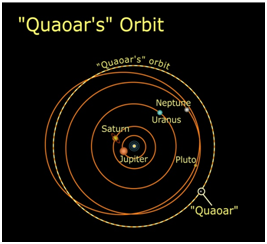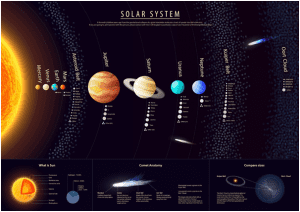Table of Contents
ECONOMIC DEVELOPMENTS
1. WHAT IS FREE FLOAT IN STOCKS?
TAGS: PRELIMS- GS-III-ECONOMY
THE CONTEXT: Recently, index provider MSCI said it has cut the free-float designations of four securities of India’s Adani group.
THE EXPLANATION:
About Free Float:
- The free float is also known as Public float which refers to the shares of a company that can be publicly traded and are not restricted.
- It generally excludes promoters’ holding, government / strategic holding and other locked-in shares, which will not come to the market for trading in the normal course.
- Free Float=(Outstanding shares-Restricted Shares-Closely held shares)
- Outstanding shares refer to the number of shares held by all of the company’s shareholders
- Restricted shares refer to shares that are not transferable until certain conditions are met. Restricted shares are generally held by corporate management, such as executives and directors.
- Closely-held shares refer to shares that are typically held onto for a very long-term basis. Examples include major long-term shareholders and insiders.
- Free Float Methodology is used to provide a more accurate reflection of market movements and stocks actively available for trading in the market.
- The free-float methodology has been adopted by many of the world’s major indexes.
- MSCI calculates free float-adjusted market capitalization for each security to calculate the weights of the securities in the MSCI indexes.
ENVIRONMENT AND ECOLOGY
2. CORBETT TIGER RESERVE
TAGS: PRELIMS PERSPECTIVE- GS-III-ENVIRONMENT & ECOLOGY
THE CONTEXT: The Supreme Court recently banned all construction activities in the core areas of tiger reserves national parks and wildlife sanctuaries.
THE EXPLANATION:
A Supreme court-appointed panel noticed that illegal constructions for the establishment of a tiger safari were being done within the buffer area of Corbett Tiger Reserve in Uttarakhand.
About the Corbett Tiger Reserve
- It is located in the Nainital district of Uttarakhand. This reserve encompasses the Patli Dun valley.
- The Ramganga, Sonanadi, Palain and Mandal, and Kosi rivers form the prominent hydrological resource for the Corbett.
- The core area of the reserve contains the Corbett National Park and the Sonanadi Wildlife Sanctuary is part of its buffer area.
- Flora: The trees which contribute to the Flora of Corbett consist of evergreen Sal and its combined trees, the Sheesham, and the Kanju found extensively on the ridges.
- Fauna: Tiger, Leopard, Elephant, Hog deer, spotted deer, Samber etc.

SCIENCE AND TECHNOLOGY
3. CAR T-CELL THERAPY
TAGS: PRELIMS PERSPECTIVE-GS-III- SCIENCE AND TECHNOLOGY
THE CONTEXT: Recently, the researchers have said that India’s first indigenously developed Chimeric Antigen Receptor (CAR)-T Cell T therapy for specific types of cancer.
THE EXPLANATION:
- Chimeric antigen receptor (CAR) T-cell therapies represent a quantum leap in the sophistication of cancer treatment.
- Unlike chemotherapy or immunotherapy, which require mass-produced injectable or oral medication, CAR T-cell therapies use a patient’s own cells.
- They are modified in the laboratory to activate T-cells, a component of immune cells, to attack tumors.
- These modified cells are then infused back into the patient’s bloodstream after conditioning them to multiply more effectively.

How does the therapy work?
- In CAR T-cell therapy, the patient’s blood is drawn to harvest T-cells which are immune cells that play a major role in destroying tumor cells.
- Researchers modify these cells in the laboratory so that they express specific proteins on their surface, known as chimeric antigen receptors (CAR).
- They have an affinity for proteins on the surface of tumor cells.
- This modification in the cellular structure allows CAR T-cells to effectively bind to the tumor and destroy it.
- The final step in the tumor’s destruction involves its clearance by the patient’s immune system.
4. QUAOAR
TAGS: PRELIMS PERSPECTIVE-GS-III- SCIENCE & TECHNOLOGY
THE CONTEXT:Astronomers have recently spotted a ring around a Pluto-sized dwarf planet called Quaoar in the outer reaches of the solar system.
THE EXPLANATION:
About Quaoar:
- Quaoar is a dwarf planet that’s located in the Kuiper Belt at the solar system’s edge.
- It is about 697 miles wide (1,121 kilometers).
- It is roughly one-twelfth the diameter of Earth, one-third the diameter of the Moon, and half the size of Pluto.
- Quaoar is greater in volume than all known asteroids combined.
- Quaoar has its own moon, the 100-mile-wide (160 km) Weywot.
- Its surface is moderately red and composed of low-density ices mixed with rock.
- It takes about 288 years for Quaoar to go once around the sun in a roughly circular orbit.

What is Kuiper Belt?
- Kuiper belt, also called the Edgeworth-Kuiper belt, is a flat ring of small icy bodies that revolve around the Sun beyond the orbit of the planet Neptune.
- There are millions of these icy objects, collectively referred to as Kuiper Belt objects (KBOs) or trans-Neptunian objects (TNOs), in this belt.
- The Kuiper Belt is a region of leftovers from the solar system’s early history.
- It is thought to be the source of most of the observed short-period comets, particularly those that orbit the Sun in less than 20 years.

PRELIMS PERSPECTIVE
5. BRU TRIBE
TAGS: PRELIMS PERSPECTIVE
THE CONTEXT: Over 14,000 Brus displaced from Mizoram have been registered to vote in Tripura since their rehabilitation process began in April 2021.
THE EXPLANATION:
About Bru Tribe:
- Bru or Reang is a community indigenous to the Northeast, living mostly in Tripura, Mizoram, and Assam.

- In Tripura, they are recognised as a Particularly Vulnerable Tribal Group.
- They belong to Indo-Mongoloid racial stock. Their languages have an affinity with Austro-Asiatic groups under the Tibeto-Burman family.
- Ethnically they are divided into 2 major clans namely Meska and Molsoi.
- Their language is known as “Kaubru” which has a tonal effect on the Kuki language though broadly it is the Kok-Borok dialect.
- Occupation: They are still a nomadic tribe and a large number among them maintain their livelihood involving Hilltop Jhum Cultivation and other food gathering activities.
- They believe in spirits and the existence of a soul.
- By religion they are Hindus and most of their deities are akin to gods and goddesses of the Hindu faith. Among Reangs followers of Vaishnavism are found in good numbers.
- This tribal community traditionally are endogamous and does not marry outside their community.
- The village council chief known as “RAI” permits Divorce and Widow marriage.
Connect the dots:
- What is Particularly Vulnerable Tribal Group (PVTG)?


